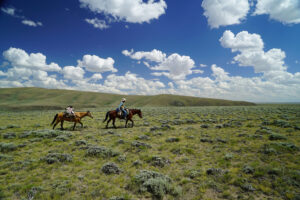.jpg)
Carter’s interest in the art of the American West in general and in the work of Remington and Russell in particular stemmed from his close friendship with the humorist Will Rogers.’
Amon G. Carter loved the West, Western art and his adopted hometown of Fort Worth, Texas, and his legacy—the Amon Carter Museum—has pleased art admirers worldwide for more than 60 years. If you love the paintings and sculptures of Frederic S. Remington (1861–1909) and Charles M. Russell (1864–1926), it should be your first stop.
“[Carter’s] interest in the art of the American West in general and in the work of Remington and Russell in particular stemmed from his close friendship with the humorist Will Rogers, who had been a personal friend of Russell’s,” says Rebecca Lawton, the museum’s curator of paintings and sculpture.
Born in 1879 in a one-room log cabin in Crafton, Texas, Carter worked as a traveling salesman and sales manager before moving to Fort Worth in 1905. Hired in 1906 as advertising manager of the new Fort Worth Star, he soon persuaded an investor to buy the competing Telegram. In 1909 the papers merged into the Fort Worth Star-Telegram, and by 1923 Carter was the paper’s president and publisher.
In 1935 Carter began collecting art, buying a 1903 Remington oil (His First Lesson) and nine Russell watercolors. Ten years later he bought Remington’s A Dash for the Timber (1889), and in 1948 he acquired Russell’s The Buffalo Hunt [No. 39] (1919). Before his death in 1955 Carter owned more than 400 works by Remington and Russell. His will stipulated that the collection be housed in a museum free and open to the public. On January 21, 1961, the 20,000-square-foot Amon Carter Museum of Western Art opened in Fort Worth.
Today the museum, now the Amon Carter Museum of American Art, has grown to almost 80,000 square feet, housing a collection of roughly 250,000 works—paintings and sculptures, photographs, works on paper, illustrated books—by not only Remington and Russell but also such other masters as Karl Bodmer, Alfred Jacob Miller, William Harnett, Georgia O’Keeffe and William Ranney. “The museum has always sought to place Western art in the larger context of American art and culture,” Lawton explains.
Yet there’s no denying the popularity of Remington and Russell. Museum visitors continue to cite A Dash for the Timber as their favorite painting in the collection, and the museum provides an interpretative gallery dedicated to Remington and Russell and an online resource of every work in the collection by those two masters.
“As we enter our next 50 years,” Lawton says, “we will keep telling the story of American art in new, interesting and compelling ways and enhance our visitors’ experience through educational programs, exhibitions and state-of-the-art technology.”




